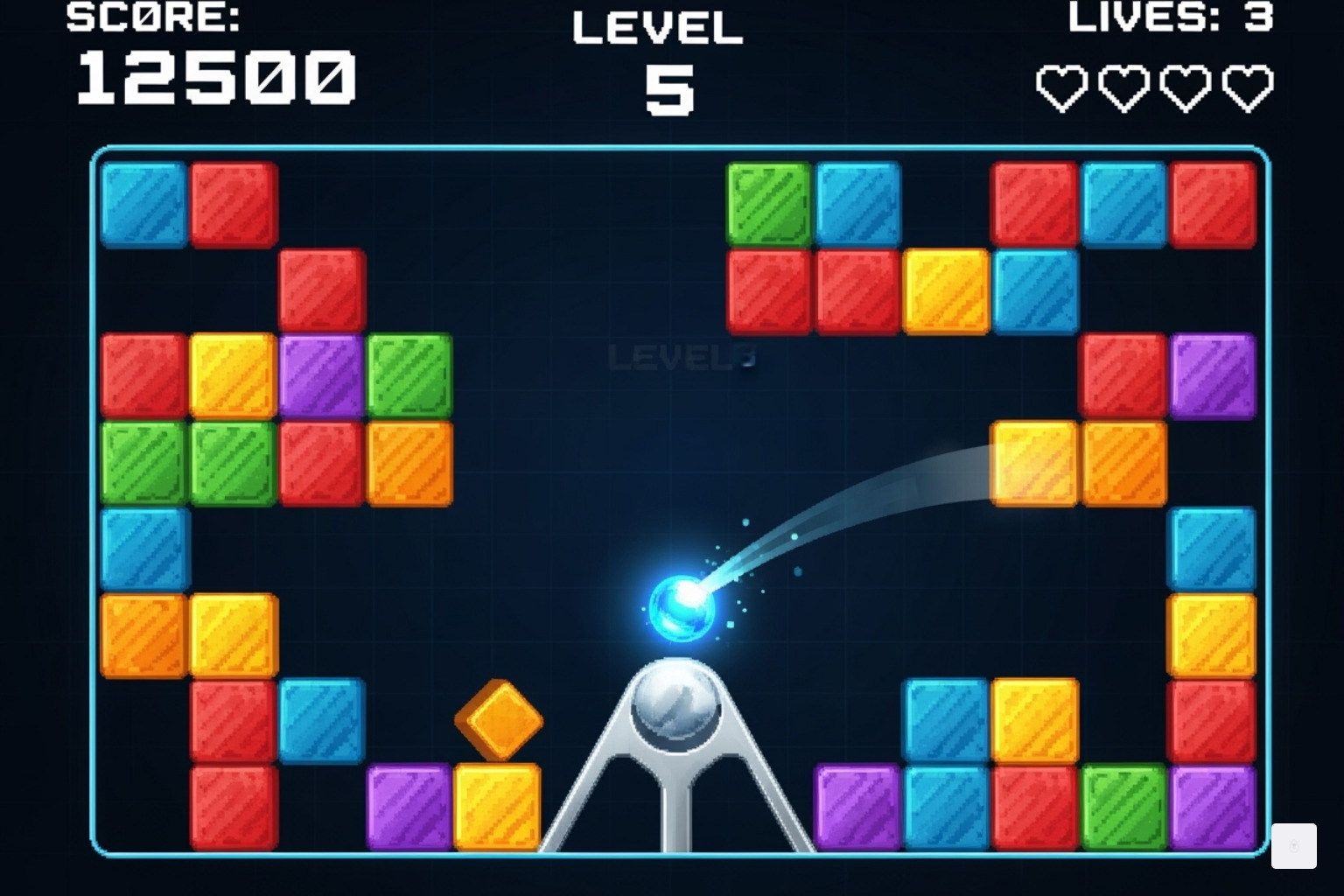Introduction
Ever feel like you need a simple, engaging game to unwind after a long day? A game that's easy to pick up but offers a surprising amount of depth? Look no further than the classic Block Breaker genre. While many variations exist, the core gameplay loop is universally appealing: guide a bouncing ball with a paddle to destroy a wall of blocks. It’s a simple premise, but the execution can be incredibly addictive. In this article, we'll dive into the world of Block Breaker, exploring its basic gameplay, offering helpful tips, and discussing why this genre continues to captivate players. We'll even take a look at a modern take on the genre, which puts a fresh spin on the classic formula.
Gameplay: The Art of Bouncing and Breaking
The fundamental gameplay of Block Breaker is elegantly straightforward. You control a paddle, typically located at the bottom of the screen. Your goal is to prevent a ball from falling past the paddle. By moving the paddle horizontally, you deflect the ball upward, aiming to hit and destroy blocks positioned above.
Here's a breakdown of the core mechanics:
- Paddle Control: The paddle is your primary tool. It’s moved left and right, usually with a mouse, touch screen, or keyboard. The responsiveness of the paddle is crucial; precise movements are essential for accurate deflections.
- Ball Trajectory: The ball's trajectory is determined by several factors: the angle at which it hits the paddle, the ball's speed, and the angle of the block it impacts. Mastering the art of angling your shots is key to clearing the blocks efficiently.
- Block Destruction: Each block requires a certain number of hits to be destroyed. Simpler blocks might break with a single impact, while tougher blocks need multiple hits. The type of blocks, their arrangement, and their resilience introduce a layer of strategy to the game.
- Power-Ups: Many Block Breaker games incorporate power-ups that add variety and excitement. These can include:
- Paddle Extension: Makes your paddle longer, giving you more surface area to catch the ball.
- Ball Speed Increase/Decrease: Speeds up or slows down the ball, making it either more challenging or easier to control.
- Multi-Ball: Splits the ball into multiple balls, increasing your chances of hitting blocks.
- Laser/Shooting Paddle: Equips your paddle with the ability to shoot lasers or projectiles, directly destroying blocks.
- Sticky Paddle: Allows you to catch the ball on your paddle and aim your next shot.
- Losing Condition: The game ends when the ball falls past your paddle, usually resulting in a lost life. Most games provide a limited number of lives. Once you run out, the game is over.
Tips for Mastering Block Breaker
While the concept is simple, becoming proficient at Block Breaker requires practice and strategic thinking. Here are some tips to help you improve your game:
- Paddle Placement: Anticipate the ball's trajectory and position your paddle accordingly. Don't just react to the ball; predict where it will be. Small, precise movements are often better than large, sweeping ones.
- Angle Control: Experiment with different angles to control the ball's direction. Hitting the edge of the paddle can create sharper angles, allowing you to target specific areas of the block formation.
- Power-Up Management: Don't waste power-ups. Save them for strategic moments when they can be most effective. For instance, using a paddle extension when the ball is moving very fast can prevent a lost life.
- Target Prioritization: Identify the most strategically important blocks. These might be blocks that are difficult to reach, blocks that are blocking access to other blocks, or blocks that trigger beneficial power-ups.
- Pattern Recognition: As you play, you'll start to recognize common block patterns. Learn how to approach these patterns efficiently. Some patterns lend themselves to specific angles and strategies.
- Patience and Persistence: Block Breaker can be challenging. Don't get discouraged by early failures. With practice, you'll develop better reflexes, strategies, and a deeper understanding of the game's mechanics.
- Observe and Learn: Watch experienced players to learn new techniques and strategies. Many online resources, including gameplay videos and forums, can provide valuable insights.
- Experiment with Paddle Movement: Try small and fast movements versus slow and long paddle movements. This can help you learn which type of movements are more effective at the correct moment.
Conclusion: The Enduring Appeal of Block Breaker
Block Breaker's enduring appeal lies in its simplicity, its accessibility, and its surprisingly addictive gameplay loop. It's a game that can be enjoyed by players of all ages and skill levels. Whether you're looking for a quick distraction or a challenging gaming experience, Block Breaker offers something for everyone. The combination of paddle control, ball physics, and strategic block destruction creates a compelling and rewarding gameplay experience.
From classic arcade versions to modern mobile iterations, the Block Breaker genre has evolved over the years. Games like the one found at Block Breaker continue to innovate and expand upon the core gameplay, introducing new features, power-ups, and challenges. So, give Block Breaker a try and experience the satisfying feeling of bouncing the ball and breaking blocks! You might just find yourself hooked on this timeless classic.
